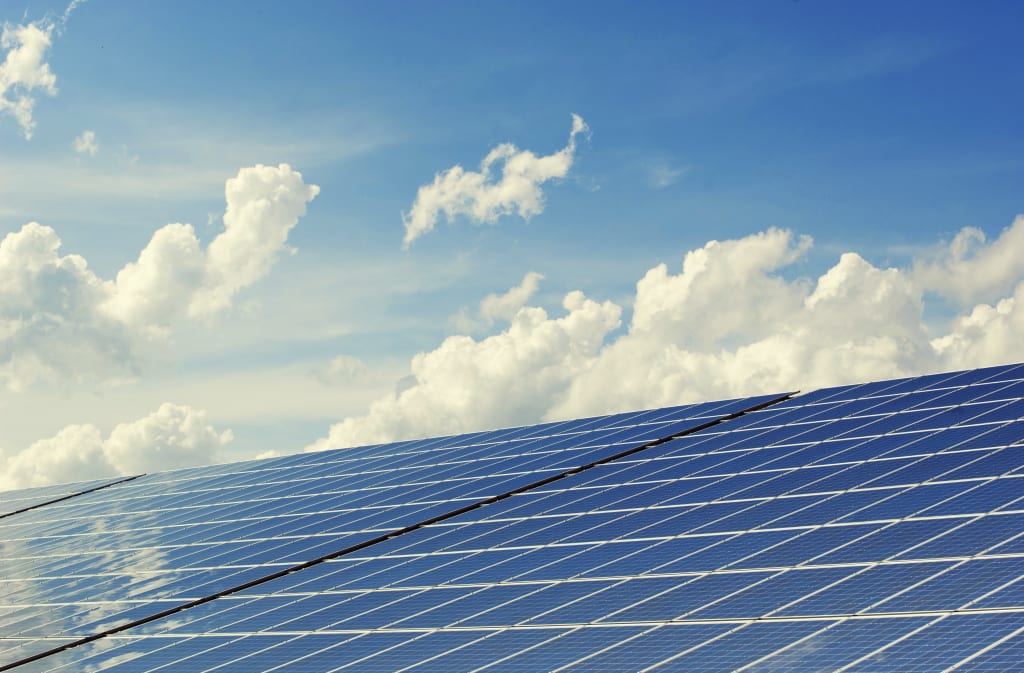
10 Ways You Can Start Saving Energy at Home Today
The winter months are the perfect time to focus on energy efficiency. Between lower temperatures and shorter daylight hours, this is an ideal time of year to minimize your home’s energy usage. The good news is that there are a variety of small changes you can make at home that will have a big impact on your energy usage. By taking simple steps like adding insulating layers to your home and switching off lights when you leave a room, you can reduce the amount of energy your house uses. Doing so will save you money on your utility bills and help reduce the strain on local power grids in peak usage months. With that in mind, here are 10 ways to start saving energy at home today.
Change Up Your Lighting Habits
One of the easiest ways to start saving energy at home is to change up your lighting habits.
The Department of Energy estimates that about 10% of an average home’s energy usage comes from lighting. That’s a significant amount of money that could be saved with small adjustments to your lighting habits.
The first step is to replace any incandescent light bulbs with fluorescent or LED bulbs. These bulbs use significantly less energy than incandescent bulbs and last much longer. When choosing light fixtures, opt for those with a lower wattage rating.
Additionally, try to avoid using lights during the day whenever possible. Using lights during the day can increase your energy usage. If possible, stick to using natural light whenever you can. Natural light is free and has no carbon emissions.
Click here to check out our no 1 recommendation for Saving Energy
Install Programmable Thermostats
Home thermostats are the primary way homeowners control their energy usage. The Department of Energy estimates that about 20% of a home’s energy usage comes from heating and cooling. As such, it’s important to make sure you have a properly-functioning thermostat.
One of the easiest ways to reduce your energy usage is by installing a programmable thermostat. These thermostats allow homeowners to manually set different temperatures at different times of the day. This allows homeowners to reduce their energy usage while they’re away from home or sleeping.
In the winter, you can use a programmable thermostat to make sure your home is warm when you wake up in the morning and when you return home from work. In the summer, you can use a programmable thermostat to keep your energy usage down while you’re at work or out of the house. Though programmable thermostats are a small investment, they can save you a significant amount of money on your monthly bills.
Install Drafting Doors and Windows
Drafting doors and windows are a common source of energy loss in homes. In order to reduce energy usage, homeowners should inspect their homes for any sources of air leakage. In particular, you should inspect the seals on all your doors and windows. Drafting doors and windows can be as easy as adding weather stripping or cork to the edges. Cork is a cheap, eco-friendly option that can be purchased at any hardware store.
You can also purchase specialized draft-sealing gaskets online. Drafting doors and windows are a relatively quick and cheap fix that can have a significant impact on your energy usage. If your doors or windows are completely broken, you may need to replace them entirely. That said, many homeowners are able to repair their existing doors and windows rather than replace them.
Click here to check out our no 1 recommendation for Saving Energy
Add Insulating Layers
Insulating the walls and ceilings of your home is one of the easiest ways to reduce your energy usage. By adding extra insulation to your home, you can lower the energy usage of your HVAC system and reduce your reliance on heating and cooling your home.
If you’re unsure where to add insulation to your home, you can consult an insulation guide. These guides can help you determine the best places to add insulation to your home based on your home’s layout. You can also hire a professional to add insulation to your home. Insulation can be expensive, but it is a worthwhile investment that will save you money over time by lowering your energy usage.
Seal Air Leaks with Foam Condensers
Air leaks are a common source of energy loss in homes. They allow warm air inside your home to escape and cold air outside your home to enter your home. Air leaks are especially common around your HVAC system. In order to reduce air leaks, homeowners should seal all openings around their HVAC system.
An easy way to do this is by using foam condensers around your HVAC system. These foam condensers are easy to install, and they’re often used by HVAC professionals. They are an excellent way to seal air leaks by expanding around the edges of your HVAC system. If you don’t have any air leaks around your HVAC system, you may still be experiencing air leaks inside your home. If this is the case, you may want to seal your home’s openings.
Add a Smart Thermostat
A smart thermostat can make it easier to reduce your energy usage. The best smart thermostats automatically adjust the temperature in your home based on the time of day. This allows you to manually set a lower temperature when you’re at work or asleep and a higher temperature when you’re home. By using a smart thermostat, you can save money on your energy usage without needing to constantly be present in your home. You can easily adjust the temperature from your phone by using the accompanying app.
Smart thermostats do cost more than traditional thermostats, but they are a worthwhile investment. Over the span of several years, you can expect to make a significant amount of money back by using a smart thermostat.
Change the way you cook and eat
The food you eat and the way you prepare it can have a significant impact on your energy usage. The Department of Energy estimates that about 10% of a home’s energy usage comes from food preparation. This includes cooking, baking, and even the act of refrigerating or freezing food.
In order to reduce the energy usage related to food preparation, you should switch to more energy-efficient cooking methods like boiling or baking. You should also plan out your meals to ensure you only use as much energy as you need. For example, you may want to make extra food to eat later in the week to avoid constantly cooking and re-freezing fresh meals. It may also be worthwhile to switch to a slower-cooking method that requires less energy to prepare.
Join a Co-op or Own Your Own Solar Panels
Joining a co-op, or a group of homeowners that invest in rooftop solar panels, is a great way to save energy at home. Many co-ops offer homeowners solar panels at discounted rates. These co-ops are usually funded by a central organization that uses donations from members to buy and install solar panels. The energy produced by these solar panels is then added to the grid for all homeowners to use.
If you don’t have room on your roof for solar panels, you can also buy shares in a solar panel installation. This allows you to receive the energy produced by other homes’ solar panels. Owning solar panels is a great way to reduce your energy usage and increase the amount of energy you’re producing.
Click here to check out our no 1 recommendation for Saving Energy
Turn Off Appliances When Not in Use
The Department of Energy estimates that about 10% of a home’s energy usage comes from plugged-in appliances. This includes everything from small appliances like coffee makers to larger appliances like televisions or refrigerators. In order to reduce the energy usage of plugged-in appliances, you should make sure to turn off appliances when they’re not in use. This includes unplugging appliances from the wall when they’re not in use and turning off larger appliances like the fridge when they’re not being used. Avoiding this small change can save you a significant amount of energy and money over the span of a year.
Conclusion
Saving energy at home is an important part of reducing your carbon footprint. It’s also a significant way to reduce your home’s energy usage. By following the tips outlined in this article, you can take control of your home’s energy usage and save money on your utility bills whil





Comments
There are no comments for this story
Be the first to respond and start the conversation.